About 15–20% of people are neurodivergent, showing how common these differences are1. Yet, only 16% of autistic adults work full-time, a number that’s slowly rising1. This shows we need to focus on using the strengths of people with autism, ADHD, and dyslexia.
Neurodiversity changes how we see brains, showing us that everyone’s different. It’s about seeing these differences as strengths, not weaknesses. This shift helps us grow personally and as a society. We create places where everyone can shine because of who they are.
Using neurodiversity can really help. Companies like SAP and Microsoft have changed how they hire to include more neurodiverse people. This has made them more productive and innovative2. Neurodiverse people bring special skills like pattern recognition and memory, giving businesses an edge2.
But, making a truly inclusive world is hard. Many neurodivergent people feel they’re not using their skills fully at work1. We need to fight stereotypes and support these individuals to do their best.
Looking closer at neurodiversity shows it’s key for fairness and growth. By valuing diverse brains, we make a world that’s more creative and caring for everyone.
Key Takeaways
- Neurodiversity recognizes the natural variation in cognitive abilities and neurological traits among individuals.
- Embracing neurodiversity involves shifting from a deficit perspective to valuing the unique strengths and talents of neurodiverse individuals.
- Companies that tap into neurodiverse talent can experience productivity gains, quality improvements, and increased innovation.
- Challenging stigmas, raising awareness, and providing accommodations are crucial for creating inclusive environments for neurodiverse individuals.
- Leveraging neurodiversity benefits both personal growth and societal advancement, fostering a more compassionate and innovative world.
Understanding Neurodiversity: Embracing the Spectrum of Human Cognition
Neurodiversity is a term that has become more popular lately. It talks about the natural differences in how people think and learn. These differences bring both strengths and challenges. The idea of neurodiversity started in the 1990s from the Autistic Rights Movement. Judy Singer coined the term in 19983. About 15-20% of people worldwide have some form of neurodivergence, which includes many conditions and ways of thinking3.
Defining Neurodiversity and Its Significance
Neurodiversity means the natural variety in how our brains work and think. It says that differences in thinking and learning are normal, not flaws. This view sees neurodivergent people, like those with autism, ADHD, dyslexia, and others, as having special strengths and views that help everyone grow and move forward.
Autism is a well-known neurodivergent condition. It shows how people with autism see the world, connect with others, and think differently4. ADHD is also gaining more recognition, with people understanding it better and focusing on controlling their attention and impulses4. About 5% of adults globally have ADHD, and its effects can vary a lot5.
The Neurodiversity Paradigm: Shifting from Deficit to Difference
The neurodiversity view changes how we see people who are different. It moves away from seeing them as broken or less capable. Instead, it values the diversity in how people think and learn. It says that traits like being sensitive to sounds, having trouble organizing, remembering things well, or seeing things in a new way are just part of being human3.
Accepting neurodivergence means making a society that values all kinds of thinking styles. It’s about creating a kinder and more supportive place for everyone4. By understanding and using terms like Asperger syndrome, ADD/ADHD, and dyslexia, we can talk about these differences in a meaningful way4.
Neurodiversity is the idea that neurological differences like autism and ADHD are the result of normal, natural variation in the human genome. – John Elder Robison, Autism Advocate
Exploring the neurodiversity spectrum helps us see the strengths and challenges of neurodivergent people. By seeing differences as just that, differences, we can make a world that welcomes everyone’s way of thinking. This way, every person can reach their full potential.
The Neurodiversity Movement: History and Evolution
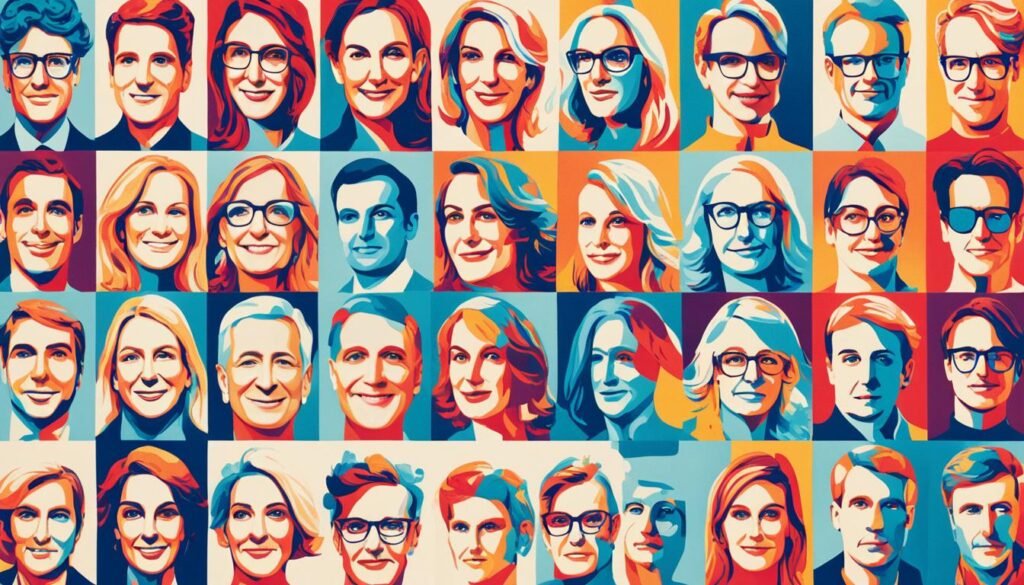
The neurodiversity movement started with disability rights and self-advocacy in the late 20th century. Judy Singer, an Australian sociologist, coined the term “neurodiversity” in 19986. This was a big step for the movement7. Singer and others changed how society sees and deals with neurological differences.
People passionate about change helped the movement grow6. It’s big in the autistic community but includes many neurological experiences, like epilepsy and dyslexia6. The movement sees everyone as unique, highlighting their strengths and challenges.
Advocacy groups have worked hard to show the value of neurological differences6. Big moments include Jim Sinclair’s 1993 speech and Kathleen Seidel’s Neurodiversity.com in 20047. Susanne Antonetta’s book “A Mind Apart” in 2005 was another key event7.
“The emergence of the neurodiversity movement over the last decade signals its growing influence and potential impact in the coming years.”6
The movement started to change culture and politics. Amy Harmon’s 2004 article in the New York Times was a big deal7. The first Autistic Pride Day in 2006 made the movement even more visible7.
Now, the neurodiversity movement is a big deal, changing how we see neurological differences6. People like Ari Ne’eman and Carly Fleishmann help make neurodiverse voices heard6. Research on neurodiversity in education and books like “NeuroTribes” show its impact7.
The movement is getting stronger, pushing society to accept all kinds of human brains. It celebrates the unique strengths and views of neurodiverse people.
Recognizing and Celebrating Neurodivergent Strengths
In today’s world, it’s key to recognize and celebrate the unique strengths of neurodivergent individuals. Neurodiversity celebrates differences in thinking and reactions8. By embracing these differences, we can make a more inclusive society that values everyone’s contributions.
People with conditions like autism, ADHD, and dyslexia have many strengths. These strengths can greatly help in life and work8. Tech and computer science sectors are actively looking for neurodivergent talent for their unique skills9. By using these strengths, we can boost innovation and creativity in many areas.
Unique Perspectives and Problem-Solving Abilities
Neurodivergent people often see things differently, which helps them solve problems in new ways. They can think outside the box and spot patterns others miss. This is very useful in work and school settings.
“Neurodivergent employees, with proper support, can bring substantial value to the workplace.”9
Creating supportive environments helps neurodivergent individuals reach their full potential. This way, we can use their unique problem-solving skills to our advantage8.
Heightened Creativity and Innovation
Many neurodivergent people are very creative and innovative. They think differently and come up with new ideas. By valuing neurodiversity, we can create a place that encourages creativity and innovation.
Neurodivergent scientists bring many strengths to the table, like attention to detail and creativity9. Supporting these strengths helps them make a big impact in their fields.
Specialized Skills and Talents
Neurodivergent individuals often have special skills that are very valuable. For example, those with autism are great at detail work and pattern recognition. People with ADHD do well in fast-paced environments where they can be creative and adaptable.
By valuing these skills, we can give neurodivergent people the chance to shine. Inclusive workplaces help remove barriers and let everyone contribute fully8.
To learn more about autism strengths and embracing neurodiversity, visit Resilient Mind Counseling.
As we learn more about neurodiversity, it’s important to celebrate the unique strengths of neurodivergent individuals. By supporting them, we can build a society that values and benefits from all kinds of human cognition.
Challenges Faced by Neurodivergent Individuals

Neurodivergent individuals still face many challenges every day. These come from not understanding their unique ways of thinking and processing information. About 15-20% of people worldwide are neurodivergent10. Yet, they often find it hard to get an education, find a job, and get the support they need.
Societal Stigma and Misconceptions
Many people still see neurodivergent individuals as less capable. They focus on what they can’t do instead of what they can. This view leads to discrimination and makes it hard for them to feel accepted.
Barriers to Education and Employment
Neurodivergent students often struggle in school because it’s not set up for their needs. They’re more likely to have mental health issues like anxiety and depression11. They might also have trouble with skills like flexibility and memory11. Without the right support, they can find it hard to do well.
At work, neurodivergent people face many obstacles. They might be unemployed at a rate of 40%10. But, research shows they can make teams 30% more productive10. Employers often miss out on their creativity, attention to detail, and special skills.
Lack of Accommodations and Support
Neurodivergent individuals often lack the support they need. For those with sensory issues, school can be tough11. Without the right tools or environments, they may not be able to show their full potential.
They also might have trouble focusing in class for various reasons11. This can cause misunderstandings with teachers who don’t know how to help. But, teaching the whole school about neurodiversity can help everyone understand better and stop bullying11.
“It’s not our job to ‘cure’ neurodivergent people. It’s our job to embrace and support them, to create a world where they can thrive as themselves.” – Steve Silberman, author of NeuroTribes
Neurodiversity in the Workplace: Harnessing Untapped Potential
Companies that welcome neurodiversity see big wins like more productivity, better quality, and new ideas. Big names like SAP, Hewlett-Packard Enterprise, and Microsoft have changed their HR to find and use neurodivergent talent. They see the unique strengths these individuals bring.
It’s estimated that about one in eight people have a neurodiverse condition12. In the workplace, this means over one in ten people could be neurodiverse12. By actively looking for and supporting these individuals, companies can unlock a big part of the workforce’s potential.
Research shows that diverse teams often do better in solving problems and coming up with new ideas13. For instance, JP Morgan Chase’s Autism at Work program saw teams with employees on the spectrum do more and better work13. Employers also find neurodiverse workers to be reliable and hardworking, leading to less time off and better following of rules13.
To bring in neurodivergent talent, companies should:
- Work with experts to make hiring more inclusive
- Use different ways to check candidates’ skills
- Train staff and managers to support a welcoming workplace
- Set up support and adjustments for each person’s needs
- Change career management to use neurodivergent strengths
A 2019 study by the Job Accommodation Network found that hiring people on the autism spectrum doesn’t cost more than hiring others12. This myth that supporting neurodivergent talent is costly is just that – a myth.
Companies that hire and support people on the autism spectrum also get a better reputation. This can lead to more loyal customers and a stronger brand13. Stories from Microsoft’s Autism Hiring Program and SAP’s Autism at Work show how important it is to support neurodivergent talent at work13.
By embracing neurodiversity and being inclusive, companies can build a workforce that’s diverse, innovative, and productive. This benefits both the company and society.
To really use neurodivergent talent, companies need to support them from start to finish. This means from hiring to keeping them and helping them grow in their careers. Programs that teach about and celebrate cognitive differences can make the workplace more welcoming for everyone12.
Inclusive Education: Nurturing Neurodivergent Learners

We aim to make education fair and welcoming for all, especially for neurodivergent students. Neurodiversity includes many conditions like autism, ADHD, and dyslexia14. By using inclusive teaching, we help neurodivergent students use their strengths and do well in school and with friends.
Adapting Teaching Methods and Curricula
Teachers need to change how they teach to meet the needs of neurodivergent students. They use Individualized Learning Plans (ILPs) that fit each student’s unique needs15. Adding things like pictures, hands-on activities, and different learning styles helps neurodivergent students understand better.
Also, making classrooms more sensory-friendly helps students who are sensitive to certain smells or sounds15. Students on the autism spectrum often struggle with sensory issues14. Quiet areas and breaks can help them stay calm and focused.
Providing Accommodations and Assistive Technologies
Helping tools and changes are key for neurodivergent learners. These can be:
- More time for homework and tests
- Different ways to show what they know, like talking or making a portfolio
- Software that helps with reading, writing, and keeping things organized
- Headphones or fidget toys for feeling better
- Visual guides and stories for easier transitions and social times
These changes help make things fair for neurodivergent students. But, schools often face challenges like not having enough staff or resources14.
To help, schools should train teachers more about neurodiversity and how to include everyone15. Working together with teachers, special education experts, and families is also key for making good support plans.
Some neurodivergent students find social skills hard. Programs or groups with peers can help15. Checking in with students and their families often helps teachers find the best ways to support them15. With a strong support network and open talks, we can make schools where everyone feels valued and can reach their goals.
Neurodiversity and Mental Health: Intersections and Considerations
As a neurodivergent individual, I’ve seen how neurodiversity and mental health intersect. Neurodiversity includes conditions like dyslexia, dyspraxia, ADHD, and autism spectrum disorder16. Many neurodivergent people also have mental health issues, showing the need for full support17.
Studies show neurodiverse people often face more anxiety16. In fact, 80% of autistic people have another mental health issue, and 40% have two or more18. Those with autism are more likely to feel anxious and depressed than others17. About three in ten kids with ADHD have anxiety, along with depression and low self-esteem16. Depression and anxiety are more common among autistic people16.
Traditional mental health treatments might not work well for neurodivergent people, so we need special approaches17. It’s hard for autistic people and their families to find mental health care that fits their needs18. Autistic teens often find it hard to talk about their mental health, unlike their peers18.
It’s important to focus on strengths to help neurodivergent people stay resilient and mentally healthy17.
Creating places that welcome neurodiverse people can really help their mental health17. Learning about neurodiversity and mental health can reduce stigma and make society more welcoming17. We need to push for policies that help neurodiverse people in healthcare, education, and work17.
- Having strong support networks helps neurodivergent people’s mental health17.
- We need ongoing research to improve how we diagnose, treat, and help neurodivergent people with mental health issues17.
- Autistic youth are nine times more likely to go to the emergency room for mental health reasons than others18.
- Autistic kids are more likely to be bullied than others18.
- Autistic youth face a higher risk of thinking about suicide and hurting themselves18.
People with dyspraxia often have other neurodivergent conditions, like ADHD or autism16. It’s key to understand how neurodiversity and mental health are connected for better support and care. By focusing on these connections and the unique needs of neurodivergent people, we can improve mental health and make society more inclusive.
Advocating for Neurodiversity: Promoting Acceptance and Inclusion
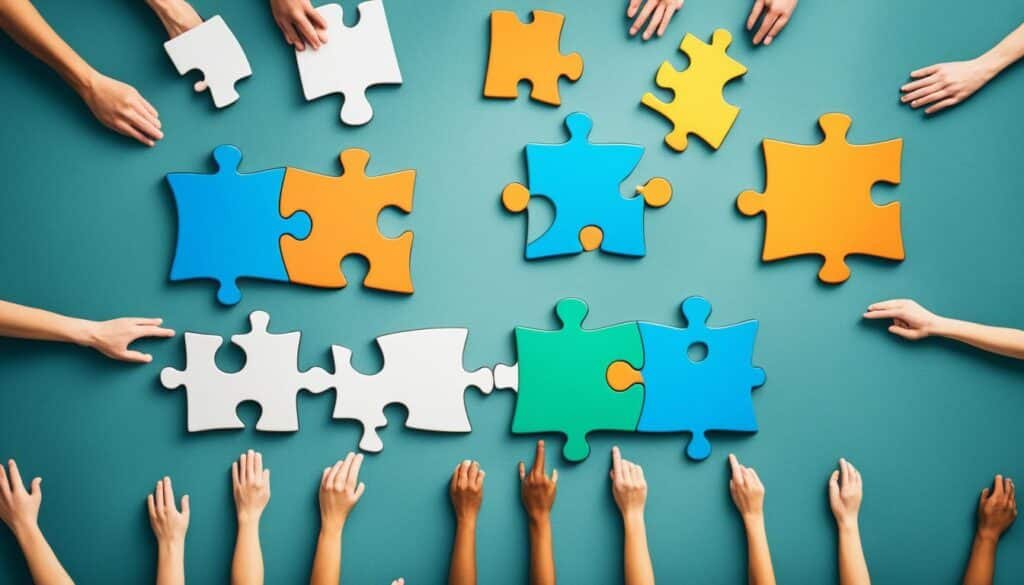
Neurodiversity advocacy is key to building a society that values diverse human cognition. About 15-20% of people worldwide have some form of neurodivergence. It’s vital to see and value the unique strengths they bring to our communities19. By fighting stereotypes and raising awareness, we aim for a world that welcomes everyone.
Challenging Stereotypes and Raising Awareness
Neurodiversity advocacy aims to fight wrong ideas about neurodivergent conditions. Many neurodiverse people have special talents, like creativity and problem-solving skills19. By sharing these strengths, we can change how society sees cognitive differences.
To promote understanding, we use many ways, such as:
- Sharing personal stories of neurodivergent individuals
- Working with organizations to spread the word about neurodiversity
- Hosting events to teach the public about neurodiversity
- Pushing for accurate and respectful portrayal in media
A survey showed 70% of parents of neurodivergent kids felt there were no support groups for them20. By making neurodiversity more visible, we can build a society that welcomes everyone’s diversity.
Empowering Neurodivergent Voices and Self-Advocacy
Helping neurodivergent people speak up for themselves is key. By giving them platforms, we make sure their voices are heard. This can be done through:
- Encouraging them to share their stories
- Supporting neurodiversity-focused media
- Teaching self-advocacy skills
- Working with groups led by neurodivergent people
The “Unpacking Autism” podcast has been a big hit, leading to a second season20. By empowering neurodivergent individuals, we can build a society that values all cognitive diversity.
The author stresses the importance of focusing on strengths when parenting a child with Autism and ADHD21.
Working with global organizations, we can offer support and training to help neurodiverse individuals thrive20. By valuing their strengths, we can unlock their potential and make society more inclusive and innovative19.
Neurodiversity-Affirming Practices and Accommodations
We need to accept neurodiversity-affirming practices and make sure our places are welcoming for everyone. About 15-20% of people worldwide are neurodivergent22. It’s important to see the strengths and challenges of those with conditions like PTSD, ADHD, and Autism23.
Using neurodiversity-affirming practices at work can really help. Employers see a 20-30% boost in productivity and happiness from neurodivergent workers22. But, only 16% of autistic adults have full-time jobs, showing we need more support22.
In schools, we should teach in ways that fit how each student learns best. This includes using models, breaking tasks into steps, and giving positive feedback23. Early support can greatly improve how well neurodivergent students do in school and with friends22. Sadly, only 17% of autistic people go to college, showing there are still big hurdles22.
Embracing neurodiversity is not about fixing or curing individuals, but rather celebrating the diversity of human cognition and providing the necessary support systems to enable every individual to thrive.
To make places more welcoming, we should:
- See neurodivergence as a difference, not a problem23
- Make spaces that are easy on the senses to help with information overload23
- Help people speak up for themselves and understand different ways of communicating, as many feel left out22
- Give flexible work options and support to help neurodivergent people succeed
By welcoming neurodiversity, we make our society better for everyone. These practices boost self-esteem and confidence in neurodivergent people by 30%22. It helps them feel they belong and can make a difference.
Let’s celebrate the many ways people think and learn. Let’s listen to the disability community and keep up with new ideas in teaching and therapy23. Together, we can create a world that values and supports everyone, no matter their brain differences.
The Role of Allies: Supporting Neurodivergent Individuals
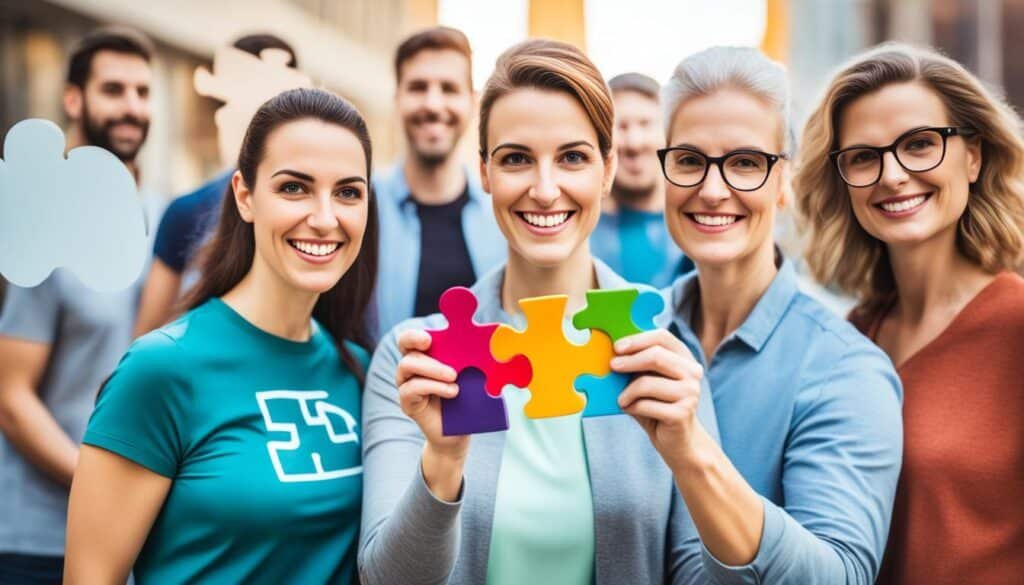
Creating a more inclusive society is crucial, and allies are key in supporting neurodivergent individuals. They help by advocating for acceptance and understanding. Since about 1 in 54 children in the U.S. has autism, and 2.5% to 4% of adults have ADHD24, allies are vital in making the world more welcoming.
Educating Oneself and Others
Being a good ally means learning about the strengths and challenges of neurodivergent people. Understanding conditions like dyspraxia and auditory processing issues helps break down stereotypes. This knowledge helps allies support neurodivergent individuals better.
Learning from neurodivergent people themselves is also important. A LinkedIn survey showed that 25% of neurodivergent individuals value listening skills, 35% respect, and 28% compassion in allies25. By listening and amplifying their voices, allies can spread awareness and understanding.
Creating Inclusive Environments
Creating places that welcome neurodivergent individuals is another key role for allies. This means pushing for accommodations in work and school. Allies can help by supporting diverse perspectives and improving communication25.
It’s also important to respect the choices of neurodivergent people. For example, many in the Deaf community prefer to be identified first24. Allies should respect these identities and push for their inclusion in society.
“Allies play a vital role in leveraging their privilege, walking alongside neurodivergent individuals, and taking concrete actions to support the cause for a more inclusive and just society.” – Prof. Amanda Kirby, author of 10 books on neurodiversity and education25
As a parent and grandparent of neurodivergent individuals25, I see how much allies can help. By educating ourselves and others, creating welcoming spaces, and amplifying neurodivergent voices, we can make a world where everyone can thrive.
Intersectionality and Neurodiversity: Addressing Multiple Marginalized Identities
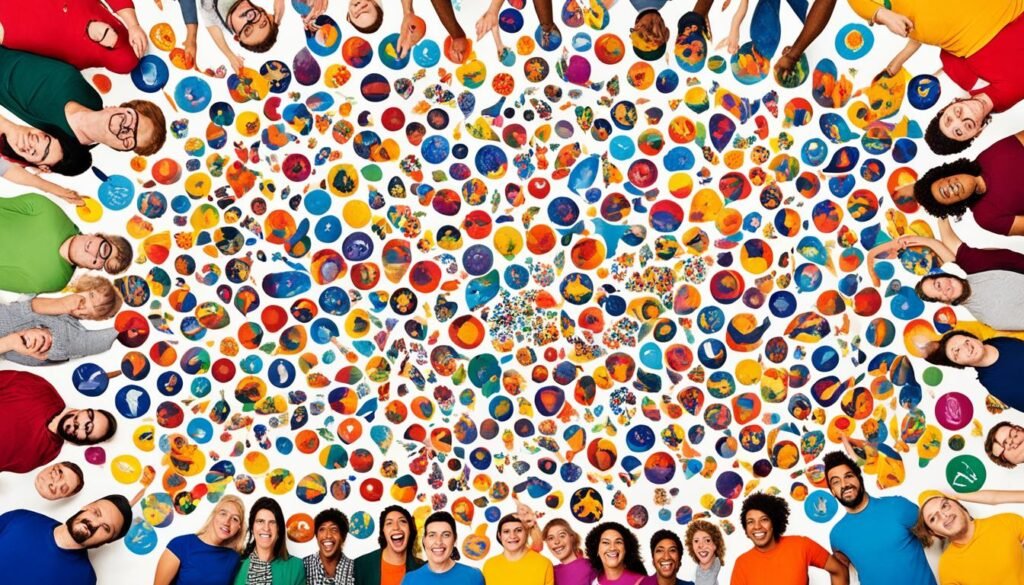
As an advocate for neurodiversity, I see how important intersectionality is. It helps us understand and support neurodivergent people. These individuals face special challenges because of their race, gender, sexual orientation, and economic status. For those in marginalized communities, these challenges can be even harder.
Women with autism often hide their symptoms more than men26. This makes it harder for them to get diagnosed and supported. There are also few diverse autism role models26. This lack of representation can make neurodivergent people from these communities feel left out.
Minorities are often not diagnosed with autism as much because of stigma26. In the UK, only 2% of psychotherapists are Black British27. This shortage of diverse mental health workers makes it tough for these individuals to find professionals who get their unique needs.
The Unique Challenges Faced by Neurodivergent Individuals from Marginalized Communities
Neurodivergent people from these communities face big challenges. They deal with discrimination because of their neurodivergence and other identities. For example, they are seven times more likely to run into police than others28. Young Black men are nearly three times more likely to be killed by police than their white peers28. Almost half of Black people killed by police are disabled28.
Anti-LGBTQ+ hate crimes are a big problem, with over one in five crimes targeting LGBTQ+ people in 202228. In the past year, most trans and gender non-conforming hate crime victims were people of color, and many were Black transgender women28. These facts show we need to focus on the intersection of neurodiversity and other marginalized identities.
“Neurodivergent individuals from marginalized communities often face unique and compounded challenges that require specific attention and support. Addressing these challenges requires an intersectional approach that recognizes the complex interplay of various identities and experiences.”
To support neurodivergent people from these communities, we must focus on diversity and inclusion. This means having more diverse role models, tackling stigmas, and training mental health workers to understand these complex issues2627. We also need policy changes at all levels to make places more welcoming27.
Creating a better society means listening to and valuing the voices of neurodivergent individuals from these communities. We need to work together to address their unique challenges. By embracing intersectionality and neurodiversity, we can make a world where everyone can succeed and be their best selves.
Neurodiversity in Popular Culture: Representation and Visibility
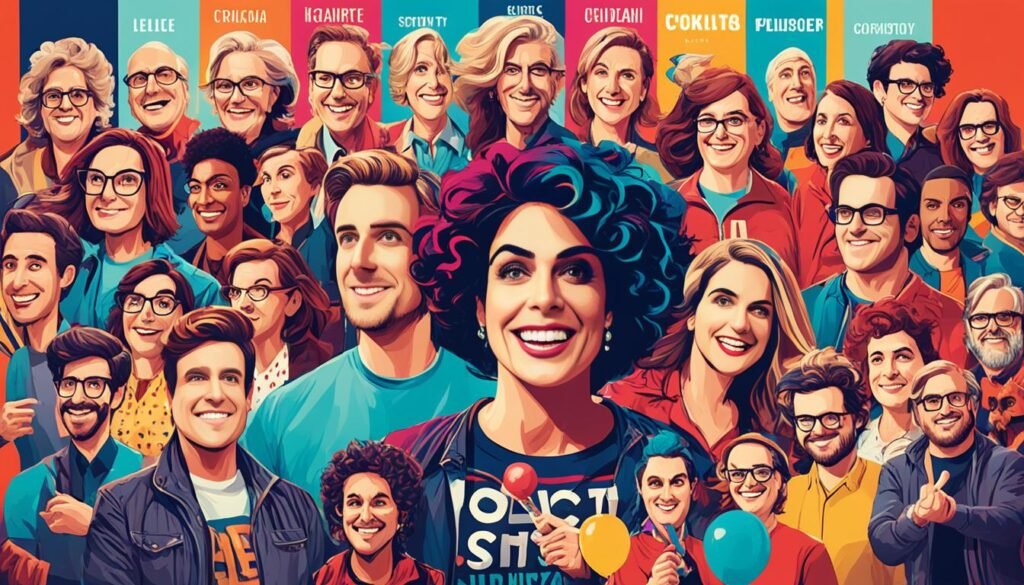
Over the past few decades, how neurodiversity is shown in popular culture has changed a lot. In the late ’80s and early ’90s, shows mainly focused on characters like Rain Man. But now, we see more diverse characters, like Data from Star Trek and Abed Nadir from Community, that connect with people who are neurodiverse29.
The Netflix series Atypical shows a lead character named Sam who is autistic. It has gotten both praise and criticism for its portrayal of autism. On the other hand, Matilda from Everything’s Gonna Be Okay is shown in a more detailed way, trying to break the stigma around disability29.
Kayla Cromer, who plays Matilda and is autistic herself, is leading the way for more neurodiverse actors in main roles. She aims to change stereotypes and make people with disabilities more visible29. This is key because the NHS says 1 in 7 people in the UK are neurodivergent, meaning they don’t fit the usual idea of being “normal”30.
Neurodiversity Celebration Week started in 2018 to fight stereotypes about neurological differences. It covers many types of neurodivergence, like ADHD and Autism30. Autism is a big part of this, affecting how people interact socially but can be helped with the right support30.
Famous people who are neurodivergent include Albert Einstein and Greta Thunberg. They show how neurodivergent people can achieve great things in different areas30.
More neurodiverse characters in popular culture are changing how we see them. By celebrating neurodiversity, we can support and accept neurodivergent people more30.
| Decade | Representation | Impact |
|---|---|---|
| 1980s-1990s | Limited, stereotypical portrayals (e.g., Rain Man) | Reinforced misconceptions about neurodiversity |
| 2010s-present | Increased diversity and nuance in portrayals (e.g., Atypical, Everything’s Gonna Be Okay) | Challenging stereotypes and promoting understanding |
We need to keep pushing for true and respectful showing of neurodiversity in media. It’s important to listen to neurodivergent people and use their stories in our stories. This way, we can make a society that values everyone, no matter their brain differences.
The Future of Neurodiversity: Envisioning an Inclusive Society
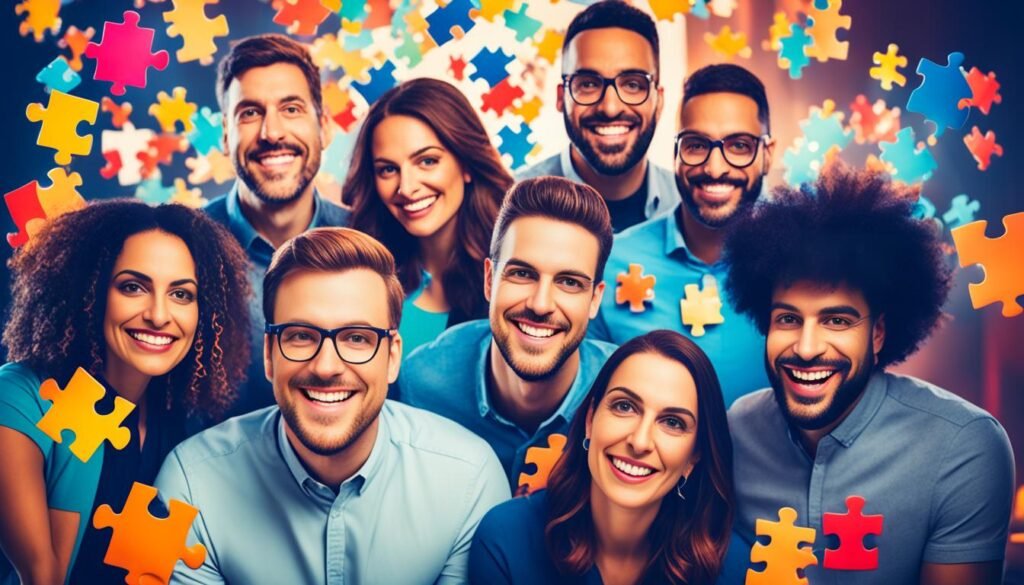
We need to dream of a world where everyone’s brain differences are celebrated. This means we must push research on neurodivergent experiences. We also need to make big changes and policies that help them.
About 15 to 20% of people worldwide are neurodiverse31. Companies that welcome neurodiverse people do better because they work well together32. To include neurodiverse people, we should train staff, change processes, and make a culture that values everyone’s differences32.
Advancing Research and Understanding
Understanding neurodivergent experiences is key to an inclusive society. By testing with neurodiverse people, we learn what they need and like31. This helps us make better strategies to support them in life.
Having neurodiverse people around makes teams work better, brings in new ideas, and makes companies more efficient32. Research helps everyone, not just neurodivergent folks, by reducing stress and improving teamwork32.
Implementing Systemic Changes and Policies
We need to make big changes and policies for neurodiverse people. This means making work and schools better for them.
Designing things with neurodiverse people in mind makes life easier for everyone31. By listening to their feedback, we can keep improving our world for them31.
Having diverse teams, including neurodiverse people, leads to new ideas and solves problems better32. By welcoming neurodiverse talents, companies do better because of their unique skills32.
As we aim for a future that values neurodiversity, we see the potential in these individuals. By doing research, making changes, and being accepting, we can help them shine. This leads to growth and new ideas for everyone.
Conclusion: Embracing Neurodiversity for Personal and Societal Growth
Embracing neurodiversity is key for personal and societal growth. It helps make the world more inclusive and fair. By valuing the unique strengths of neurodivergent people, like their sharp focus, problem-solving skills, and creative ideas33, we unlock new potential. This can lead to more innovation and progress in many areas34.
Companies that focus on diversity, including neurodiversity, tend to be more innovative and financially successful34. This shows how important it is to welcome neurodiversity in the workplace.
We need to fight against the stigma and discrimination against people with autism and other neurodivergent conditions35. Changing our mindset and offering support helps these individuals fully join society35. By making spaces that meet their needs, we help them reach their full potential and feel they belong35.
Acceptance of neurodivergent individuals leads to less stigma. This promotes self-acceptance, self-advocacy, and better mental health33.
In schools, teaching that includes everyone helps students succeed, feel good about themselves, and be empathetic33. The 2022 Learnfully Neurodiversity Report shows we need special teaching methods for neurodiverse students to learn better and use their strengths34. By embracing neurodiversity and making big changes, we can build a society that values and uses the wide range of human talents and experiences.
FAQ
What is neurodiversity?
Neurodiversity celebrates the natural variety in how people think and process information. It sees conditions like autism, ADHD, and dyslexia as part of the human spectrum, not disorders.
What does it mean to be neurodivergent?
Being neurodivergent means your brain works differently from most people. You might have autism, ADHD, dyslexia, or other conditions that change how you think, learn, and act.
What are some unique strengths of neurodivergent individuals?
Neurodivergent people often have special talents. They’re creative, solve problems in new ways, remember things well, and excel in recognizing patterns and math. These skills help them and society grow when supported.
What challenges do neurodivergent individuals face in society?
They face stigma, lack of understanding, and barriers to education, jobs, and support. This makes it hard for them to fit in and get the help they need.
How can workplaces support neurodiversity?
Workplaces can help by hiring inclusively, offering support, training staff, and adapting to neurodivergent needs. This approach can boost innovation and performance.
What can educational institutions do to nurture neurodivergent learners?
Schools can adapt teaching and offer special help like extra time on assignments. They should use technology to support learning and focus on the strengths of neurodivergent students.
How does neurodiversity intersect with mental health?
Many neurodivergent people also have mental health issues like anxiety and depression. Neurodivergence itself isn’t a mental illness, but the challenges they face can affect their mental well-being. It’s important to understand and support their mental health needs.
What can I do to advocate for neurodiversity?
You can educate yourself and others, challenge stereotypes, and support neurodivergent voices. Creating inclusive spaces helps everyone, including neurodivergent individuals, feel valued and supported.
What role do allies play in supporting the neurodivergent community?
Allies are key in supporting neurodivergent people. They educate others, fight stereotypes, and advocate for inclusion. Their support is crucial for the neurodivergent community’s fight for equality.
How can embracing neurodiversity lead to personal and societal growth?
Embracing neurodiversity lets us see and value the unique strengths of neurodivergent individuals. This can lead to more innovation, creativity, and progress in many areas. A society that values diversity benefits everyone.
